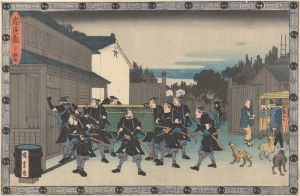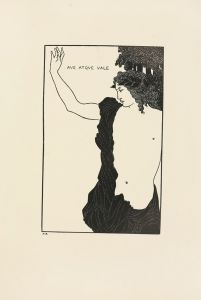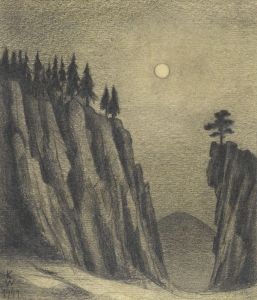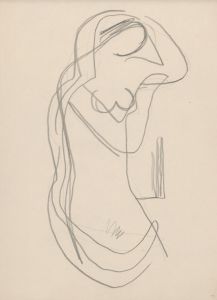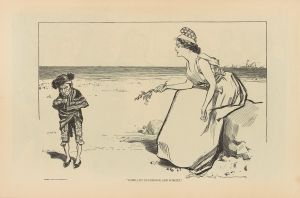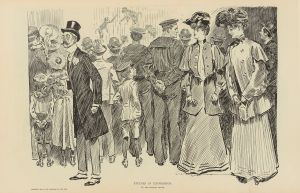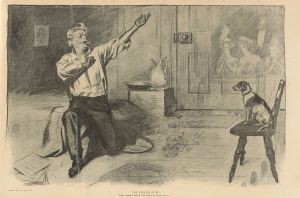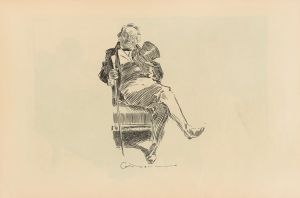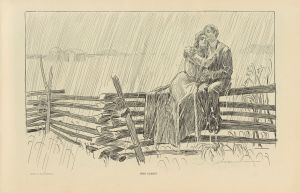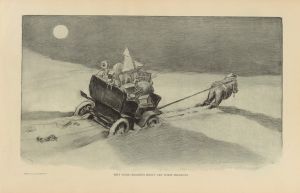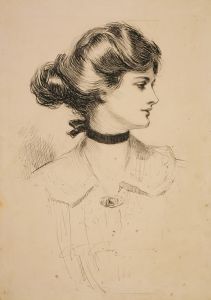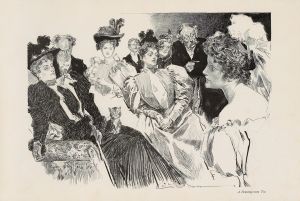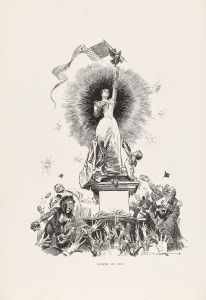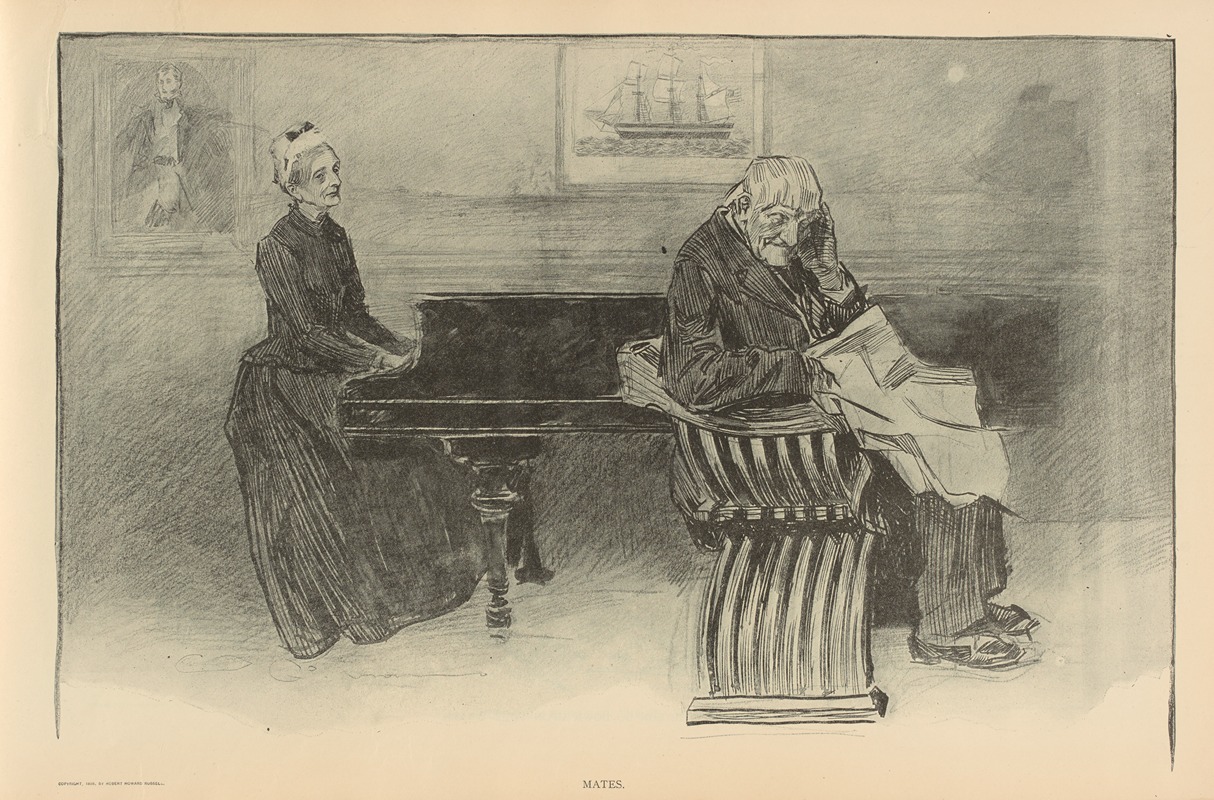
Mates
A hand-painted replica of Charles Dana Gibson’s masterpiece Mates, meticulously crafted by professional artists to capture the true essence of the original. Each piece is created with museum-quality canvas and rare mineral pigments, carefully painted by experienced artists with delicate brushstrokes and rich, layered colors to perfectly recreate the texture of the original artwork. Unlike machine-printed reproductions, this hand-painted version brings the painting to life, infused with the artist’s emotions and skill in every stroke. Whether for personal collection or home decoration, it instantly elevates the artistic atmosphere of any space.
Charles Dana Gibson was an influential American illustrator best known for his creation of the "Gibson Girl," a representation of the idealized American woman at the turn of the 20th century. One of his notable works is "Mates," a piece that exemplifies his skill in capturing the social dynamics and fashion of his time.
"Mates" is a black-and-white illustration that showcases Gibson's characteristic pen-and-ink style, which was both detailed and expressive. The artwork typically features a scene with men and women, often in a social setting, reflecting the norms and interactions of the era. Gibson's illustrations were widely published in magazines such as Life, Harper's Weekly, and Scribner's, making his work highly recognizable and influential in shaping public perceptions of gender roles during the late 19th and early 20th centuries.
The "Gibson Girl," which frequently appeared in Gibson's works, including "Mates," was characterized by her poised demeanor, fashionable attire, and a sense of independence and confidence. This figure became an icon of American culture, representing a new standard of femininity that was both aspirational and reflective of societal changes, such as the women's suffrage movement and evolving gender roles.
Gibson's illustrations, including "Mates," often depicted scenes of courtship and social interaction, capturing the nuances of human relationships with a touch of humor and satire. His work was not only a commentary on the social customs of his time but also an artistic exploration of the dynamics between men and women. The characters in "Mates" are typically portrayed with exaggerated features and expressions, a hallmark of Gibson's style, which added a layer of wit and insight to his observations.
The popularity of Gibson's illustrations, including "Mates," was partly due to their accessibility and relatability. They were widely circulated in popular publications, reaching a broad audience and influencing fashion and social attitudes. The "Gibson Girl" became a trendsetter, with women emulating her style, which included upswept hair, high-necked blouses, and long skirts. This influence extended beyond fashion, as the "Gibson Girl" embodied a blend of traditional femininity and modern independence, resonating with the aspirations of many women during that period.
Charles Dana Gibson's work, including "Mates," remains significant in the study of American art and culture. His ability to capture the essence of his time with elegance and humor has left a lasting legacy, and his illustrations continue to be appreciated for their artistic merit and historical value. Through works like "Mates," Gibson not only entertained but also provided a window into the social fabric of his era, making him a pivotal figure in the world of illustration and a chronicler of American life at the turn of the century.





